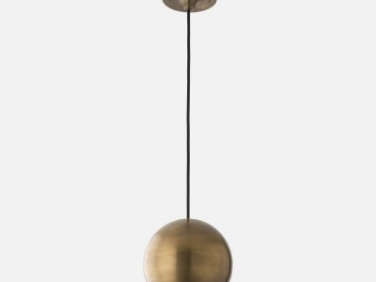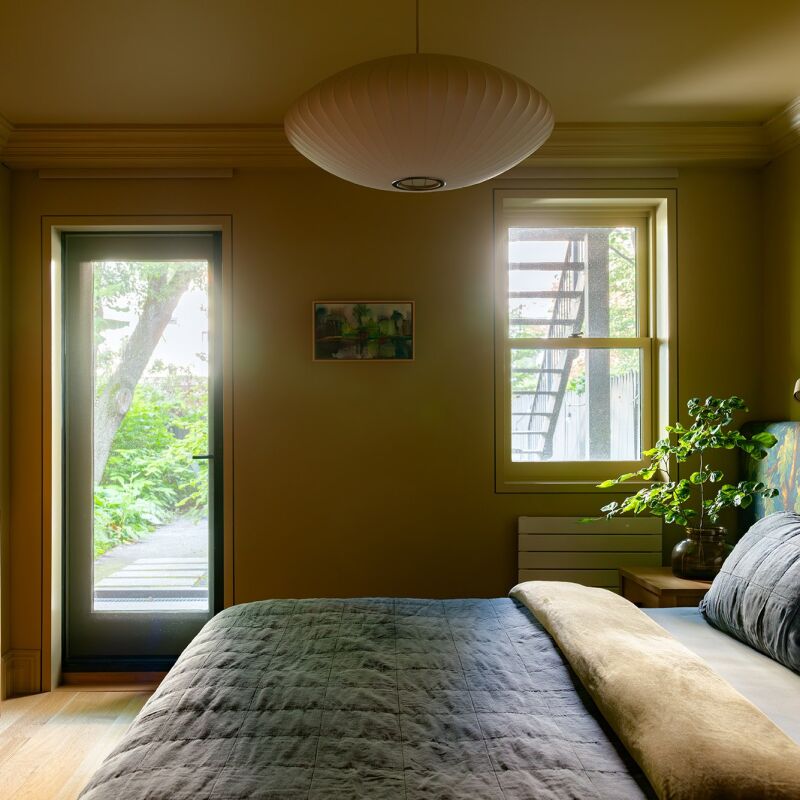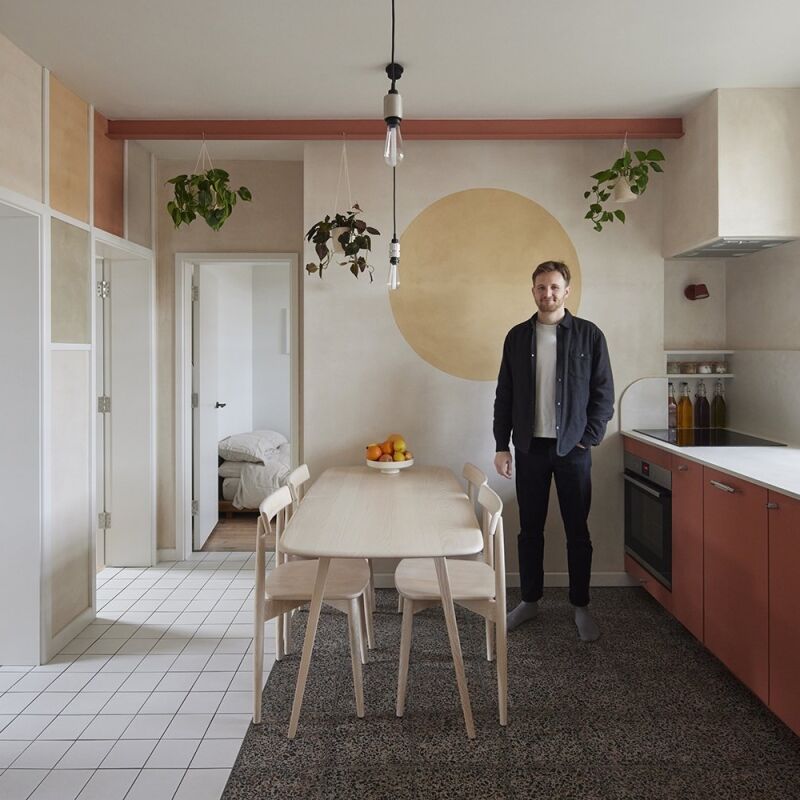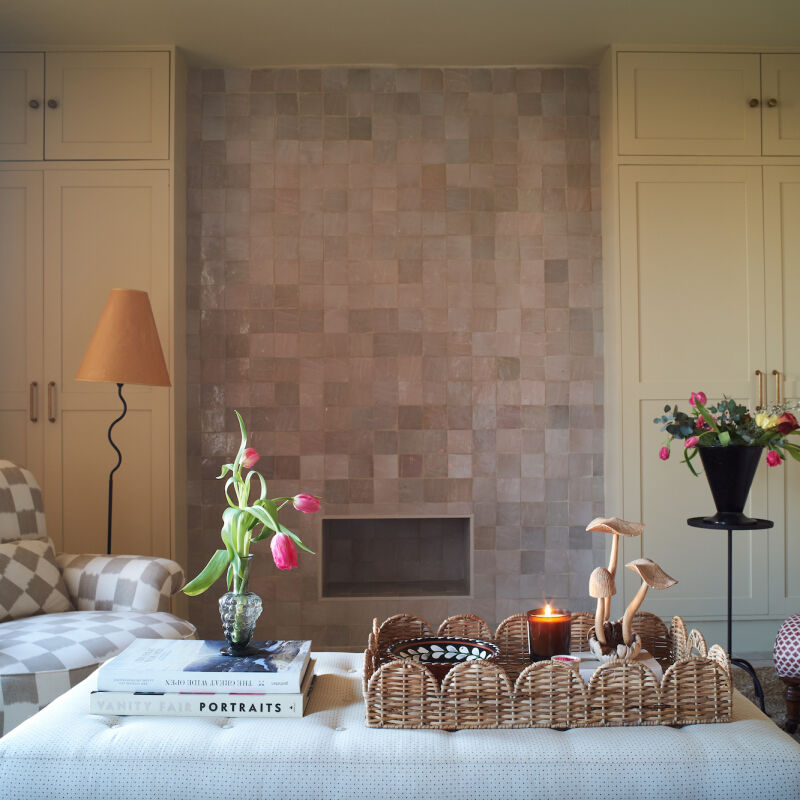Most people know actor, writer, director, and producer Corbin Bernsen from his movie and TV roles–remember Arnie Becker on LA Law?–but in real life, at home with his wife, Amanda Pays, and their four sons, he plays the ultimate in-house carpenter and handyman. A shared interest in remodeling and design was in fact one of the things that brought the couple together–Amanda is a former actress now full-time interior designer, and the two have been renovating and flipping houses together in LA for the last two decades. We featured their California king-sized kitchen in the Remodelista book, and in recent posts we’ve spotlighted their backyard bunkhouse and laundry room–all of which Corbin had a hand in planning and building.
We met up with Corbin and Amanda at their latest flip house off Mulholland Drive and asked Corbin to fill us in on life as a serial remodeler and tool-belt wearing guy. (Stay tuned: Amanda will be filling us in next on her recycle, restore, and reuse approach to design.)
Photographs by Laure Joliet for Remodelista, unless otherwise noted.
Above: Corbin and Amanda test out the Isaac 1 Light Pendant from Schoolhouse Electric in the kitchen of their latest flip, a 1960s 2,000 square foot post-and-beam house that they bought in February and have just finished.
Remodelista: How many houses have you and Amanda remodeled?
Corbin Bernsen: About twenty. I actually did a few before I met Amanda as well, including the one I was living in when we met (which she immediately re-remodeled!). And when I was in my late teens, I put myself through a few of years of college by flipping a small house in Laurel Canyon. Not an easy one–it was about a hundred steps up a hillside–but the job was mostly “paint and carpet.”

Above: Corbin with a barn board–the day we dropped in, he was working on a sliding barn door to go between kitchen and living room.
RM: How did you pick up your carpentry skills?
CB: That first flip came about thanks to my godfather who built small houses in LA. He financed the project; I did the work and got the profit. He was a great friend and mentor who put me on construction crews at a very early age, starting with sweeping up at “roll the cords” (the end of the day’s work when you roll up the electric cords around 3 pm). That was right after school, so I made a few bucks and started to learn the trade. Then, in my teens, I started doing real carpentry during the summer with his crew. I loved framing– the smell of the wood, watching the walls take shape. That’s still my favorite part of the process: seeing something grow from nothing.

Above: Corbin’s work table in the flip house.
RM: When you and Amanda are house hunting what do you look for?
CB: The first thing that we look for, or “feel” for, are bones, history. If the bones aren’t intact, we simply don’t respond. Houses that have either been untouched or added to with respect for the original structure usually get a further glance. But there’s more, especially in California: the outside, the garden also needs to have a feel and must be in proportion to the lot size and the house that sits on it. We can absolutely tell when a house has had loving owners and happy families. There’s a vibe.
RM: How do you Amanda collaborate on projects?
CB: One of the greatest things Amanda and I have shared over the years is our love of remodeling. It’s a central part of our bond. And we were fortunate to discover early on that we each have our own strengths. Mine has always been space planning, and Amanda is great at all the design details. Often the process starts with a stick and a patch of dirt. From there I’ve become pretty good at creating fairly detailed scale drawings on graph paper. After that I like to tape things out, or put up string to show the rooms. Once I’m done, Amanda steps in (in actuality, she’s there all along the way), but after the space is “discovered,” she then starts thinking about design details, which can affect some spatial choices, so we work in tandem. I think we both thrive on problem solving.


Above: The barn door in progress.
RM: Any advice for how to find a good contractor?
CB: Hate to say it but roll of the dice. The harsh reality of today is that contractors need to have multiple projects going to keep their crews. Having a great construction crew, like a filmmaking crew, is everything. You want them to be into the project, share the sense of adventure, and take pride in a job well done. Too often it’s just a paycheck. I buy our crew lunch now and then, get to know everyone’s name, involve them in the project. This isn’t a trick but a genuine effort to acknowledge all involved are part of the history of the house and its future.
RM: Advice for how to control costs?
CB: I’m the last one to talk to about controlling costs. For me the project is either done right or why do it at all. Thankfully, I have Amanda, who, like many great producers I’ve worked with in film and television, knows where to draw the line. She’s actually very practical–she buys all of our appliances at Sears and reuses furnishings over and over. We love old things–Amanda is all about recycling–so we buy just about everything for our houses at flea markets: we’ve found doors, windows, sinks, plumbing fixtures, rugs, shelving. Lately we’ve been sourcing old wooden cupboards to use as pantries in place of built-ins. For our current kitchen, we needed fifty cupboard handles and found exactly fifty incredible old galvanized metal handles at a flea market for $25.

Above: Corbin designed and built the wooden stairs in the couple’s backyard shed that they turned into a bunkhouse. For a full tour, see Backyard Bunkhouse, Hollywood Royal Family Edition. Photograph by Matthew Williams for Remodelista.

Above: The Corbin special: a bedside shelf made from an old scaffolding board. Photograph by Matthew Williams for Remodelista.

Above: Corbin introduced order to a utility drawer by inserting a wooden cutlery tray. The metal drawer pulls are the ones the couple discovered at a flea market, $25 for 50. To see more, go to Amanda Pays and Corbin Bernsen Air Their Dirty Laundry. Photograph by Matthew Williams for Remodelista.
RM: Five favorite tools for working around the house?
CB: I narrowed my list down to seven:
1. Estwing 28 oz. framing hammer. I’ve had mine for almost 40 years.
2. Classic circular Skil Saw.
3. Carpenter’s pencil. I only use the thick ones that used to be given out free at lumberyards; now you pay for them!
4. My tool belt. Had a great one that was part of my life for 30 years and it was just stolen. Very cool, worn-in tan suede. Classic. Gone!
5. Carpenter’s square by Stanley.
6. Snapline. A most handy tool for ripping plywood and boards; it gives you a blue chalk line to cut from one end to the other.
7. My music. My taste varies wildly, but I like music to get things going. Bob Marley always seems to work.
RM: Are all tool belts essentially equal?
CB: Not at all–the perfect one is broken in, soft, fits your waist perfectly, and doesn’t crawl down to your ass over the course of the day. I bought a new one, but it ain’t workin’.

Above: “We love the creation process, and I suppose the challenge,” says Corbin. “There’s a great sense of accomplishment from overcoming obstacles. When projects come together, there’s that we did it feeling.” See more of Amanda’s work at Amanda Pays Design.
RM: As a handyman, what do you find yourself fixing most often in your own house?
CB: Changing fucking light bulbs! Nobody in my camp will do it. They’d rather live in the dark than change a light bulb. Beyond that, I mostly fix things that involve wood and/or framing. I’m not a plumber or electrician–one stinks and the other can kill you if you screw up. I do wood.
For more Expert Advice, see Every Woman Loves a Contractor, tips on how to hire and work with a builder. On Gardenista, read Michelle’s 10 Mistakes to Avoid When You Remodel.






Have a Question or Comment About This Post?
Join the conversation (9)